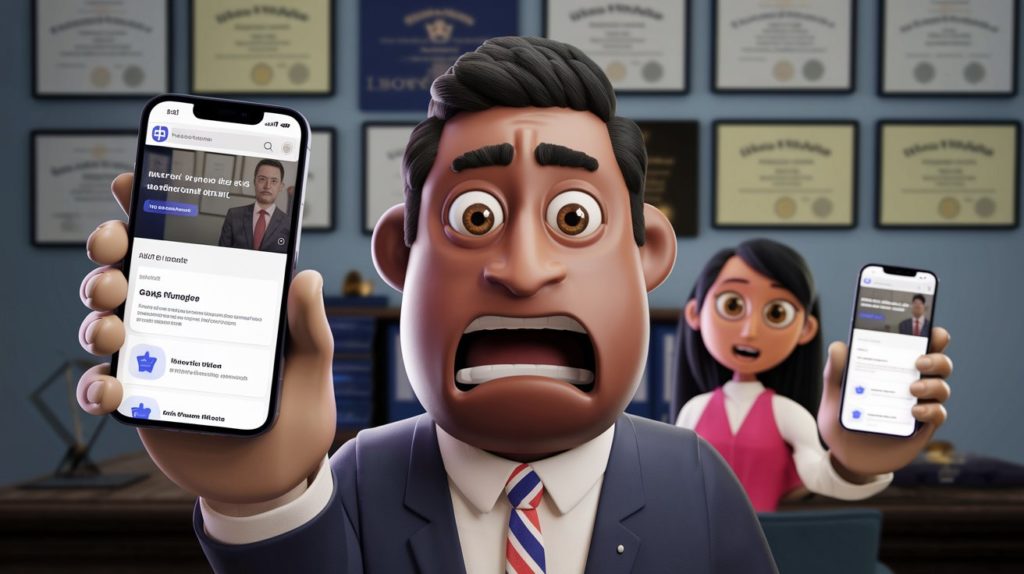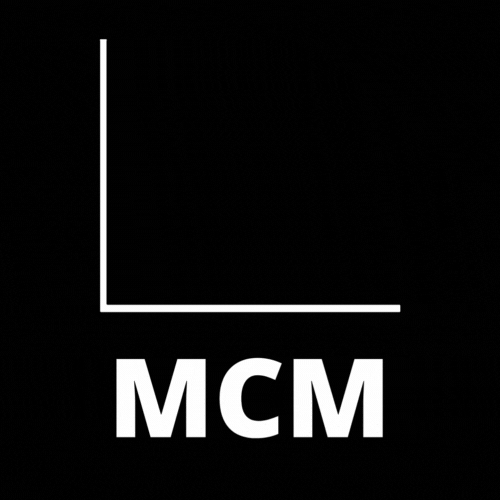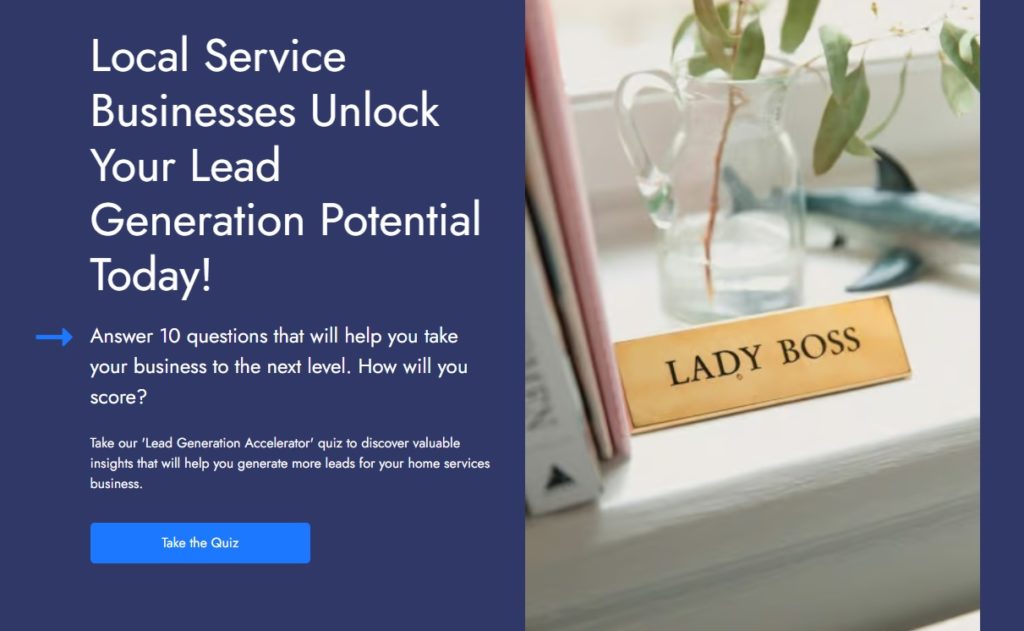In the landscape of legal services, the competition is so fierce that effective web marketing for lawyers is essential for attracting and retaining clients.
A well-designed website serves as the digital storefront for law firms, showcasing expertise and building trust with potential clients. However, many lawyers fall into common pitfalls that can undermine their online presence and hinder their marketing efforts.
In this post, we’ll explore ten critical website mistakes that lawyers often make, offering insights on how to avoid them and enhance your digital strategy.
By addressing these issues, you can ensure that your law firm stands out in the crowded online marketplace and effectively connects with those who need your services.
The Curious Case of the Invisible Local Lawyer

Digital Marketer Sarah Johnson stared at her computer screen, baffled by her latest client. A prominent local attorney, Mark Stevens, had hired her to solve a perplexing mystery: why was his law firm invisible to potential clients in his own backyard?”
It doesn’t make sense,” Mark had told her. “I’ve got billboards all over town, but when people search online for a lawyer, it’s like I don’t exist!” Sarah, known for her digital investigative skills, immediately suspected a classic case of Local SEO neglect.
She’d seen it before – lawyers so focused on casting a wide net that they forget to fish in their own pond.
Her investigation revealed the usual suspects:
- An unclaimed Google My Business listing, gathering digital dust.
- Inconsistent NAP information (Name, Address, Phone number) information scattered across the web like conflicting witness statements.
- A website devoid of local keywords, as if ashamed of its own hometown.
- A startling lack of client reviews, leaving potential clients with no testimony to Mark’s expertise.
Sarah knew what she had to do.
She outlined her plan of action:
- Claim and optimize the Google My Business listing, filling it with more details than a meticulously prepared legal brief.
- Ensure NAP consistency across all online platforms, creating a unified narrative of Mark’s firm.
- Develop location-specific content, weaving local flavor into every page like a skilled storyteller.
- Implement a review strategy, encouraging satisfied clients to share their experiences.
- Use local keywords naturally throughout the site, as if Mark were chatting with a neighbor about his practice.
As Sarah implemented these changes, something remarkable happened. Mark’s firm began climbing the local search rankings faster than a surprise witness could change a case.
Phone calls increased, and new clients started mentioning they’d found him through local searches. Presenting her findings to Mark, Sarah couldn’t help but smile. “In the case of Stevens Law Firm vs.
The Invisible Local Presence,” she declared, “I’m pleased to report we’ve secured a favorable verdict. Your firm is now as visible online as it is on those billboards.”Mark nodded, impressed.
He realized that in the world of web marketing for lawyers, sometimes the most important cases are won not in the courtroom, but in the local search results. And thanks to Sarah’s expert sleuthing, his firm was now firmly on the digital map.
Case closed, and a valuable lesson learned: in the legal world, being a local hero can be just as important as being a legal eagle. After all, justice might be blind, but your potential clients shouldn’t be blind to your local presence.
Need Help? Schedule A Free One On One Consult
We know that this may seem complicated. But you do what you do best (practice Law) and we do what we do best (creating and optimizing digital assets)
So You Can Concentrate on What You do Best.
Complex Navigation and Poor User Experience: Don’t Make Your Website a Legal Labyrinth

Picture this: a potential client lands on your law firm’s website, eager to find information about your services. But instead of a clear path, they’re met with a maze of confusing menus, buried pages, and enough legalese to make even a seasoned judge’s head spin.
Congratulations! You’ve just turned your website into the digital equivalent of filling out tax forms… in Klingon. Complex navigation and poor user experience are the quicksand of legal websites.
They trap visitors, frustrate potential clients, and send them running faster than you can say “objection overruled.” Remember, your website should be as welcoming and easy to navigate as your office reception area – not a replica of a dusty law library with books stacked to the ceiling.
To transform your website from a legal labyrinth into a user-friendly oasis:
- Simplify your menu structure: Stick to main categories and use clear, jargon-free labels
- Implement a logical hierarchy: Organize content in a way that makes sense to non-lawyers
- Use breadcrumbs: Help visitors understand where they are on your site
- Add a search function: Let users find exactly what they’re looking for quickly
- Ensure mobile responsiveness: Your site should be as easy to use on a smartphone as on a desktop
Remember, the goal is to guide visitors effortlessly through your site, not to test their patience or problem-solving skills. Think of your website as your digital handshake – firm, confident, and leaving a positive impression.
By improving your site’s navigation and user experience, you’re not just making life easier for your visitors; you’re also boosting your search engine optimization.
Search engines love websites that users find easy to navigate, so it’s a win-win for your legal web marketing strategy.In the end, your website should be more “Perry Mason” (clear, compelling, and gets results) and less “Law & Order” (complex, drawn-out, and full of dramatic pauses). Because when it comes to attracting clients online, the verdict is clear: user-friendly websites win the case every time.
The Case of the Missing Call-to-Action: Are You Guilty Of This

Detective John Smith stared at the computer screen, his brow furrowed. He’d been hired to investigate a string of disappearances – not of people, but of potential clients. The culprit? A law firm’s website that seemed to be a black hole for visitor engagement.
“I’ve seen this before,” he muttered, taking a sip of his cold coffee. “It’s the classic case of the missing Call-to-Action.” Indeed, many law firm websites suffer from this affliction.
They present information, showcase credentials, and even offer compelling content. But when it comes to guiding visitors towards taking the next step, they fall silent. It’s like inviting someone to a party but forgetting to tell them where it is.
Smith leaned back in his chair, his mind racing. He knew the solution, but implementing it would require finesse. Here’s what he’d recommend:
- Strategic placement: CTAs should be visible without being obnoxious. Think of them as helpful signposts, not flashing neon billboards.
- Clear and compelling language: “Contact us” is fine, but “Get Your Free Case Evaluation” or “Secure Your Legal Rights Now” packs more punch.
- Design that pops: Use contrasting colors and white space to make CTAs stand out.
- Relevance is key: Tailor CTAs to the content of each page. A blog post about divorce law should have a different CTA than a page about corporate litigation.
- Test and refine: Like any good investigation, improving CTAs requires gathering evidence and adjusting tactics.
As Smith wrapped up his report, he couldn’t help but smile. With these changes, the law firm wouldn’t just be presenting information – they’d be guiding potential clients toward action.
And in the world of legal web marketing, that could make all the difference between a thriving practice and one that’s always searching for its next case.
The detective closed his laptop, ready to present his findings. After all, in the mystery of online engagement, a well-placed Call-to-Action might just be the smoking gun that cracks the case wide open.
The Content Conundrum: When Less is Definitely Not More

Sarah, a talented attorney, sat in her office, staring at her firm’s website with a mixture of pride and confusion. The design was sleek, the colors were on-brand, but something was off.
It hit her like a gavel strike – the content was as thin as a first-year law student’s resume.”Content is king,” she muttered, recalling a marketing seminar she’d attended.
But her firm’s website was more of a content pauper.The problem? Many lawyers fall into the trap of thinking that a minimalist approach to website content is sophisticated. In reality, it’s like showing up to court without your case files.
Here’s how Sarah decided to beef up her firm’s online presence:
- Blog regularly: She started a weekly blog, covering everything from recent legal changes to interesting case studies. It wasn’t just good for SEO; it showcased the firm’s expertise.
- FAQs that actually answer questions: Instead of generic queries, Sarah created comprehensive FAQs addressing real client concerns. It was like having a 24/7 consultation service.
- Practice area deep dives: Each practice area got its own detailed page, explaining processes, potential outcomes, and why their firm was the right choice.
- Client stories (with permission, of course): Nothing sells like success. Sarah began featuring anonymized client stories, showing real-world results.
- Resource center: From downloadable guides to informative videos, Sarah created a knowledge hub that positioned her firm as a go-to source for legal information.
As she implemented these changes, something magical happened. The website transformed from a digital business card into a living, breathing representation of the firm’s expertise.
Traffic increased, bounce rates decreased, and most importantly, potential clients started reaching out, already half-convinced of the firm’s competence.Sarah leaned back, satisfied. She’d learned an important lesson in legal web marketing:
When it comes to content, it’s not about how little you can say, but how much value you can provide. After all, in law as in life, those who have the most to offer usually come out on top.
The Need for Speed: Why Your Website Shouldn’t Run Like a Court Case

Tom, a tech-savvy paralegal, was tasked with figuring out why their law firm’s website was hemorrhaging visitors. Armed with a cup of coffee and his trusty laptop, he dove into the analytics.
What he found made him spill his latte all over his keyboard.The culprit? Page load speed. Their website was moving slower than a class action lawsuit.”Great Scott!” Tom exclaimed, channeling his inner Doc Brown.
“We’re losing potential clients faster than we can say ‘billable hours’!”Indeed, in the world of web marketing for lawyers, speed isn’t just about efficiency—it’s about survival. Here’s what Tom discovered:
- The 3-Second Rule: If a page takes more than 3 seconds to load, 53% of mobile users will abandon it. That’s a lot of potential clients saying “case dismissed” before even seeing the content.
- SEO Impact: Google considers page speed in its ranking algorithms. A slow site is like showing up late to court—it doesn’t look good and you might miss your chance to make your case.
- User Experience: A fast website isn’t just good for SEO; it’s good for users. And happy users are more likely to become clients.
Tom rolled up his sleeves and got to work. Here’s how he turbocharged the firm’s website:
- Image Optimization: He compressed images without losing quality. It was like putting the firm’s visual evidence on a diet.
- Minifying Code: He streamlined CSS, JavaScript, and HTML. Unnecessary code was eliminated faster than hearsay in a courtroom.
- Leveraging Browser Caching: This allowed returning visitors to load the page faster than you can say “objection!”
- Content Delivery Network (CDN): He implemented a CDN to serve content from servers closer to the user’s physical location. It was like having a law office in every city.
The results were dramatic. Page load times dropped from a glacial 8 seconds to a zippy 2 seconds. Bounce rates plummeted, and conversions soared.
As Tom presented his findings to the partners, he couldn’t help but grin. “In the case of Our Firm vs. Slow Websites,” he declared, “I’m pleased to report a favorable verdict.
We’ve not only won the battle for speed, but we’ve set a new precedent for our online presence.”The partners nodded approvingly. They realized that in the digital age, justice delayed might be justice denied, but a delayed website is business denied. And that’s one case no lawyer wants to lose.
Do What You Do Best and Let Us Take Care Of The Rest
SSL: Your Digital Bodyguard in the Wild West of the Web

Meet Lisa, a brilliant attorney who could argue circles around opposing counsel but found herself utterly baffled by the concept of website security.
One day, while sipping her morning coffee and scrolling through her emails, she noticed a message from a concerned client:
“Hey Lisa, is your website safe? It’s showing as ‘Not Secure’ in my browser.
“Lisa nearly choked on her latte. Not secure? But she was in the business of protection – legal protection! How could her digital storefront be leaving the door wide open for potential threats?
Enter SSL (Secure Sockets Layer), the unsung hero of website security. Think of SSL as the bailiff of the internet world – it keeps the bad guys out and ensures that sensitive information stays confidential. Without it, your website is like a courtroom without metal detectors – anyone could walk in with nefarious intentions.
Here’s why SSL is crucial for law firm websites:
- Trust Building: That little padlock icon in the address bar? It’s like a digital handshake, assuring visitors that their information is safe with you.
- SEO Boost: Google favors secure websites. No SSL? You might as well be pleading the Fifth in the search rankings.
- Data Protection: Client information is sacred. SSL encrypts data, keeping it safer than sealed court documents.
- Compliance: Many regulations require secure data transmission. SSL helps you stay on the right side of the law.
Lisa, determined to fix this oversight, called her web developer faster than you can say “habeas corpus.” Within days, her site was sporting a shiny new SSL certificate.The result?
Her website’s bounce rate dropped like a dismissed case, and inquiries started pouring in. Clients felt safe sharing their information, and Lisa could rest easy knowing her digital practice was as secure as her physical one.
As she admired her newly secured website, Lisa couldn’t help but chuckle. “Who knew,” she mused, “that in the world of web marketing for lawyers, sometimes the best defense is a good offense – especially when it comes to cybersecurity.
“And just like that, Lisa’s website went from potential liability to a fortress of digital trust. Case closed!
Social Proof: The Jury of Public Opinion

Meet Alex, a talented attorney who couldn’t understand why his website wasn’t converting visitors into clients. His credentials were impeccable, his track record stellar, but something was missing.
It was as if he was presenting a case without any witnesses or evidence. One evening, while binge-watching courtroom dramas, it hit him like a surprise witness testimony – his website lacked social proof!
In the world of web marketing for lawyers, social proof is like character witnesses for your firm. It’s the voice of satisfied clients testifying to your expertise and results.
Without it, potential clients are left to wonder, “Can I trust this lawyer to handle my case?” Alex decided to take action.
Here’s how he turned his website into a compelling showcase of social proof:
- Client Testimonials: He reached out to past clients, collecting glowing reviews faster than a court stenographer types. These weren’t just generic “great service” comments, but detailed accounts of how Alex had positively impacted their lives.
- Case Studies: Alex crafted anonymized stories of his most impressive wins, turning complex legal battles into engaging narratives that potential clients could relate to.
- Awards and Recognitions: He prominently displayed his professional accolades, proving that his peers respected his work as much as his clients did.
- Media Mentions: Any time Alex was quoted in the press or featured in legal publications, he made sure to highlight it on his site.
- Social Media Integration: He embedded his firm’s social media feeds, showing real-time engagement with the community.
The results were dramatic. Visitors to Alex’s site no longer saw just another lawyer; they saw a trusted advocate with a proven track record.
Inquiry rates soared, and Alex found himself with more potential clients than he could handle.As he sat back in his office chair, admiring his newly revamped website,
Alex couldn’t help but smile. He realized that in the court of public opinion, social proof was the most persuasive evidence he could present.”In legal web marketing,”
Alex mused, “It’s not just about telling potential clients you’re great. It’s about showing them that others already know it. “And with that, Alex had not only won his case for better online marketing but had set a new precedent for how lawyers could build trust in the digital age. The verdict was in: Social proof had made all the difference.
Keyword Calamity: The Case of the Invisible Law Firm

Picture this: A bustling city street, lined with law offices. Each one has a giant neon sign above it, clearly stating their specialty. “DIVORCE LAWYER,” screams one. “PERSONAL INJURY EXPERT,” shouts another. But there’s one office with a sign that just says… “LAW FIRM”
That, my friends, is essentially what happens when a law firm neglects proper keyword usage and meta descriptions on their website. Meet Rachel, a brilliant environmental lawyer who couldn’t figure out why her website was buried deeper than toxic waste in search results.
Her content was top-notch, but in terms of visibility, she might as well have been practicing law in an underground bunker.One day, while explaining to her nephew how to use specific search terms to find rare Pokémon, it hit her.
She’d been using vague, generic terms on her website instead of targeted, specific keywords that potential clients might actually search for.Rachel rolled up her sleeves and got to work:
- She researched relevant keywords, focusing on long-tail phrases like “environmental damage lawsuit California” instead of just “lawyer.”
- She crafted unique, compelling meta descriptions for each page, treating them like elevator pitches to potential clients.
- She updated her page titles to include key terms, transforming “Services” into “Environmental Law Services – California Pollution Claims.”
- She sprinkled relevant keywords naturally throughout her content, like herbs in a well-prepared meal – enhancing flavor without overpowering.
- She created location-specific pages, targeting searches like “San Francisco bay area environmental attorney.”
The result? Rachel’s website climbed the search rankings faster than a judge’s gavel comes down on a frivolous lawsuit. Suddenly, she was visible to the very people who needed her services most.
As she watched her client inquiries increase, Rachel couldn’t help but chuckle. “Who knew,” she mused, “that in the world of legal web marketing, sometimes you have to name the Pokémon to catch it?”
The lesson was clear: In the vast ocean of the internet, proper keywords and meta descriptions aren’t just fancy SEO terms – they’re the beacon that guides your ideal clients to your digital shore. Without them, even the best law firm website risks becoming nothing more than a message in a bottle, bobbing unnoticed in the vast sea of search results.
The Set-It-and-Forget-It Syndrome: Why Your Website Isn’t a Crockpot

Meet James, a seasoned personal injury lawyer who prided himself on staying ahead of the curve. He had a state-of-the-art office, the latest legal software, and even a fancy espresso machine that could make lattes faster than he could say “objection sustained.”But when it came to his website? Well, let’s just say it was stuck in a time warp that would make Doc Brown’s DeLorean look cutting-edge.James had fallen victim to the dreaded Set-It-and-Forget-It Syndrome. He’d launched his website back when flip phones were all the rage and hadn’t touched it since. It was like he’d filed his website away in a dusty cabinet, right next to his collection of VHS tapes and floppy disks.One day, while explaining to his teenage daughter why he couldn’t “just swipe right” to accept a new client, James had an epiphany. If he wouldn’t use outdated methods in his legal practice, why was he doing it with his online presence?Determined to drag his website into the present day, James took action:
- He set up a content calendar, committing to regular blog posts and updates.
- He implemented a quarterly design review to keep the site looking fresh and modern.
- He started monitoring his site’s performance, using analytics to guide improvements.
- He began featuring recent case results and new team members to show the firm’s growth.
- He made sure all plugins and security measures were up-to-date, treating his website’s maintenance with the same diligence he applied to case preparation.
The transformation was remarkable. James’s website went from digital dinosaur to a sleek, informative platform that actually reflected his firm’s expertise and success.As he admired the updated site, James couldn’t help but laugh. “I guess in web marketing for lawyers,” he mused, “you can’t rest on your laurels – or your outdated HTML.”The lesson was clear: A website isn’t a set-it-and-forget-it tool. It’s a living, breathing representation of your practice. Neglect it, and you might as well be trying to win a case with an opening statement alone.In the end, James realized that just as the law evolves, so must a lawyer’s online presence. And in the fast-paced world of digital marketing, yesterday’s cutting-edge is today’s objectionable evidence. Case closed!
Do What You Do Best and Let Us Take Care Of The Rest
The Mobile Optimization Mishap: When Your Website Goes Rogue on Smartphones

Meet Carlos, a brilliant immigration lawyer with a website that looked absolutely stunning… on his office desktop. Little did he know, his site was pulling a Jekyll and Hyde act the moment it loaded on mobile devices.
One fateful day, Carlos was having lunch with his tech-savvy niece, Maria. As they chatted about his practice, she asked to see his website on her phone. What followed was a scene straight out of a digital horror movie.
“Tío Carlos,” Maria gasped, “what happened to your website? It’s like trying to read the Constitution through a keyhole!”Carlos peered at the tiny screen, his eyes widening in shock. His beautifully designed website had transformed into a jumbled mess of microscopic text, overlapping images, and buttons so small you’d need tweezers to click them.
Realizing he’d stumbled into the dreaded Mobile Optimization Mishap, Carlos sprang into action:
- He hired a responsive design expert faster than you can say “habeas corpus.”
- They implemented a mobile-first approach, ensuring the site looked great on screens of all sizes.
- Carlos insisted on larger, finger-friendly buttons that even the most caffeinated lawyer could tap accurately.
- They optimized images to load quickly, because mobile users wait for slow-loading pages about as patiently as a judge waits for a late attorney.
- The team simplified navigation, creating a mobile menu that was easier to use than the coffee machine in Carlos’s office.
The results were dramatic. Mobile traffic to Carlos’s site skyrocketed, and inquiry forms started pouring in faster than objections in a heated trial.
As Carlos admired his newly optimized site on his smartphone, he couldn’t help but chuckle. “Who knew,” he mused, “that in the world of web marketing for lawyers, sometimes you need to think small to make it big?”
The lesson was clear: in today’s mobile-first world, a website that’s not optimized for smartphones is like showing up to court in your pajamas – it might work, but it’s certainly not going to win you any favors.And just like that, Carlos’s website went from mobile menace to smartphone sensation. Case dismissed!
For The DIY People Get My Free SEO Ultimate Cheat Sheet
You will be able to optimize you digital assets in no time. Just follow along and check things off as you go. Really simple to follow cheat Sheet get yours today!



